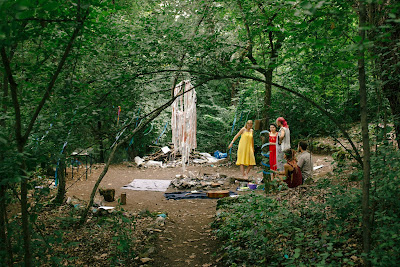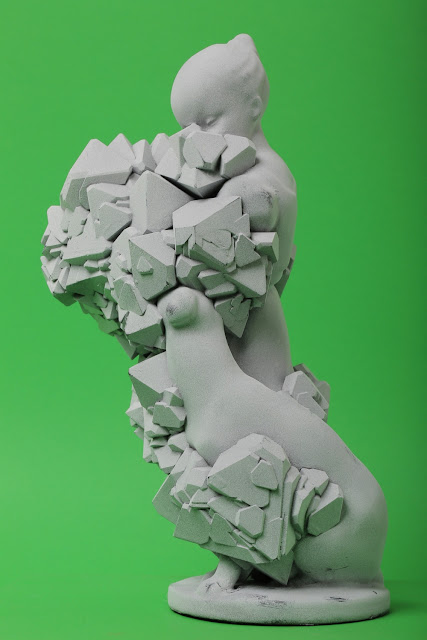Beyond the Fragile Geometry of Space: Antal Plank (HU) and Tomasz Piars (PL), (March 2018)
BEYOND THE FRAGILE GEOMETRY OF SPACE
Contemporary art exhibition in House of Arts Veszprém, Várgaléria
Opening on March 14th, 2018 at 6 pm
Opening speech by
László Hegyeshalmi director of House of Arts Veszprém
Patrycja Rup curator and art manager
ARTISTS: Tomasz Piars / Plank Antal
“You don’t see something until you have the right metaphor to let you perceive it”
― James Gleick, Chaos: Making a New Science
― James Gleick, Chaos: Making a New Science
Exhibition Beyond the Fragile Geometry of Space is based on the formal dialogue between paintings of Polish artists Tomasz Piars and sculptures of Hungarian artist Antal Plank. It reveals complex relations between abstract geometric objects analyzed by both creators through the reformulation of aesthetic forms and artistic strategies across decades and continents. Geometry becomes a metaphor.
In works of Tomasz Piars the lines, angles, forms and figures come along to create a multi-level exercise in painting strategies revealing the bare structure of each piece.Black Crystals series includes works consisting of accumulated mysterious crystal-shaped pieces.While these excerpts from different time dimensions, traditions and visual orders occur on the same surface, they do not endeavor to integrity, but still stress the sharpness and diversity of one another. The paintings suggest a multidimensional structure, hidden areas where the boundary lines do not accidentally establish new divisions. As they derive profusely from the history of art and bring back diverse historical moments, they may be seen as a pictorial answer to deleuzian crystal-image theory, where the time splits into passing presence and preserved past. The past is like a virtual world in which we immerse ourselves trying to reach memories hidden in it and update them in the form memory-images. In Black Crystals we find the coexistence of multiple areas of the past.
Minimalist bright sculptures of Antal Plank express formal experiment in a search of new perfect shape, simultaneously calling attention to the materiality of the work. Even though they are made with an extreme economy of means and reduced to the essentials of geometric abstraction, they maintained the unique ease and dynamics.Sublimated futuristic structures seem to belong to the world of science and technology, but only seemingly, because we can find in them forms inspired by nature.They take a shape of crystal-like solids, large scale origamis or futuristic machines.These consist of fragments organized through the lines due to influence of different vectors and forces. While the inner tension is generated artist aims to keep this condition and at the same time hold the balance. His works show the sense of motion and simultaneously express the risk of losing balance, this is how they reflect on the continuously changing states of things in our surrounding. While steal remains the main material, it imitates plastic convincingly, emphasizing the integrity of the form, but due to its physical properties refers to its fragility and liability.
Exhibition analyses inherited and well accepted metaphors concerning geometric abstraction. Both artists carefully observe the reality around them, sense the tension and circulation of energy to express it through their dynamic creations. Presented artworks ask which histories and narrations are the appropriate ones to help read the object. In turn, what kind of histories does the object tell? What narrations are hidden behind broken pieces? The object forces us to recover these histories, to find them again within its condensed mode of telling.
*The title was inspired by a fictional book by a fictional character in Don’t Look Now (1973), directed by Nicolas Roeg
Press links:
https://wmiasto.pl/page/4/?archives-list=
http://contextus.hu/a-ter-torekeny-geometriajan-tul-kiallitas-a-veszpremi-muveszetek-hazaban/
https://nagylatoszog.hu/2018/03/10/3d-emlek-kepek/
http://contextus.hu/a-ter-torekeny-geometriajan-tul-kiallitas-a-veszpremi-muveszetek-hazaban/
https://nagylatoszog.hu/2018/03/10/3d-emlek-kepek/














